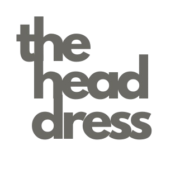Fashion is more than just clothing; it is a dynamic reflection of societal values, cultural shifts, and technological advancements. Over the past century, women’s style has undergone profound transformations, mirroring the changing roles, freedoms, and identities of women worldwide. From the rebellious flapper dresses of the 1920s to today’s personalized digital expressions, each era marks a chapter in this ongoing evolution.
Table of Contents
- The Roaring Twenties: Foundations of Modern Women’s Fashion
- The Mid-20th Century: Reinvention and Revival
- The 1970s to 1990s: Diversity and Expression
- The 21st Century: Digital Age and Personalization
- Non-Obvious Dimensions of Women’s Style Evolution
- The Future of Women’s Style: Trends and Predictions
- Connecting Past, Present, and Future in Women’s Style
The Roaring Twenties: Foundations of Modern Women’s Fashion
The 1920s marked a pivotal shift in women’s fashion, characterized by liberation from traditional constraints. The iconic flapper dresses with their fringe and dropped waistlines embodied a newfound spirit of independence and rebellion. Bob cuts replaced elaborate hairstyles, symbolizing a break from Victorian femininity. These styles were heavily influenced by societal changes following World War I, which challenged long-standing gender roles and expectations.
An interesting trend during this era was the symbolic use of red roses, which appeared frequently in fashion and accessories, representing vitality and passion. This floral motif subtly challenged traditional notions of femininity, asserting a more assertive and expressive identity for women. Fashion was thus a tool for social commentary, emphasizing movement towards gender equality and individualism.
The Mid-20th Century: Reinvention and Revival
The impact of World War II on women’s clothing was profound, prioritizing practicality and comfort. Utility garments with simpler cuts became essential as women entered the workforce in unprecedented numbers. Following the war, Hollywood’s influence revived glamour, with Christian Dior’s New Look in 1947 epitomizing elegance through cinched waists and full skirts, reinforcing femininity after wartime austerity.
The 1950s and 1960s also saw the emergence of rebellious youth cultures. Figures like James Dean and Brigitte Bardot popularized styles that challenged societal norms—leather jackets, mini skirts, and bold accessories—signaling a shift towards individual expression. These trends reflected broader societal transformations, including the rise of feminism and civil rights movements.
The 1970s to 1990s: Diversity and Expression
The late 20th century was marked by a vibrant mix of styles driven by cultural influences. Casual wear and athleisure gained popularity, emphasizing comfort. Music genres like punk, disco, and grunge directly influenced fashion choices—punk’s rebellious leather and studs, disco’s glittery glamour, and grunge’s flannel shirts and ripped jeans exemplify this diversity.
| Era | Key Fashion Influence |
|---|---|
| 1970s | Disco, Bohemian |
| 1980s | Power dressing, punk |
| 1990s | Grunge, minimalism |
During this period, societal shifts such as feminism and globalization broadened fashion choices, encouraging women to experiment freely. The continued popularity of reds and roses highlighted their symbolic power—passion, strength, and femininity—across different cultures and styles.
The 21st Century: Digital Age and Personalization
The advent of social media transformed women’s fashion, making trends instantly accessible and allowing for rapid personal experimentation. Fast fashion brands responded to this demand, offering affordable, trendy clothing that often blurred the lines between vintage, modern, and global influences. Information appeared on their main site exemplifies how digital platforms cultivate new symbols of confidence—like the iconic “Lady In Red”—which embody empowerment and self-expression.
This era also emphasizes sustainability and ethical fashion, with consumers increasingly seeking brands that align with their values. Modern garments often serve as statements of identity, confidence, and social awareness, reflecting a shift from merely following trends to cultivating personal style.
Non-Obvious Dimensions of Women’s Style Evolution
Beyond visible clothing trends, technological innovations have significantly influenced women’s fashion. Fabrics with advanced moisture-wicking or stretch properties enhance comfort, while virtual fashion platforms enable experimentation without physical constraints. For example, virtual fitting rooms and digital runway shows are reshaping how women explore style.
“Fashion is a mirror reflecting societal progress, and its evolution demonstrates how women have continuously redefined their identities and roles.”
Political movements, from suffrage to recent gender equality campaigns, have historically driven fashion trends—often using style as a form of protest or assertion. Additionally, globalization has facilitated cultural exchange, diversifying women’s wardrobes and promoting cross-cultural appreciation, as seen in the popularity of traditional fabrics and motifs worldwide.
The Future of Women’s Style: Trends and Predictions
Emerging technologies like artificial intelligence and virtual reality promise personalized shopping experiences and virtual try-ons, making style more accessible and tailored. Self-expression and authenticity will continue to be central, with women increasingly choosing styles that resonate with their individual identities rather than conforming to mass trends.
Historical styles, such as the 1920s flapper, remain influential—reinterpreted through modern lenses. For instance, the confidence symbolized by the “Lady In Red” persists, demonstrating how iconic garments can embody empowerment across generations. As fashion evolves, it will likely blend technology, sustainability, and personal storytelling to shape future trends.
Connecting Past, Present, and Future in Women’s Style
Over the past century, women’s fashion has transformed from rebellious flapper dresses to digitally curated personal styles. Each phase reflects broader societal shifts—liberation, glamour, diversity, and authenticity. Recognizing this progression enriches our understanding of fashion as a powerful tool for self-expression and social change.
As we look ahead, embracing technological innovations and cultural diversity will continue to inspire new expressions of confidence and identity. Whether through historical echoes like the 1920s flapper or modern symbols like the “Lady In Red,” women’s style remains an ever-evolving canvas for personal and societal narratives. We encourage readers to explore their own style journeys, drawing inspiration from the past while shaping the future.

